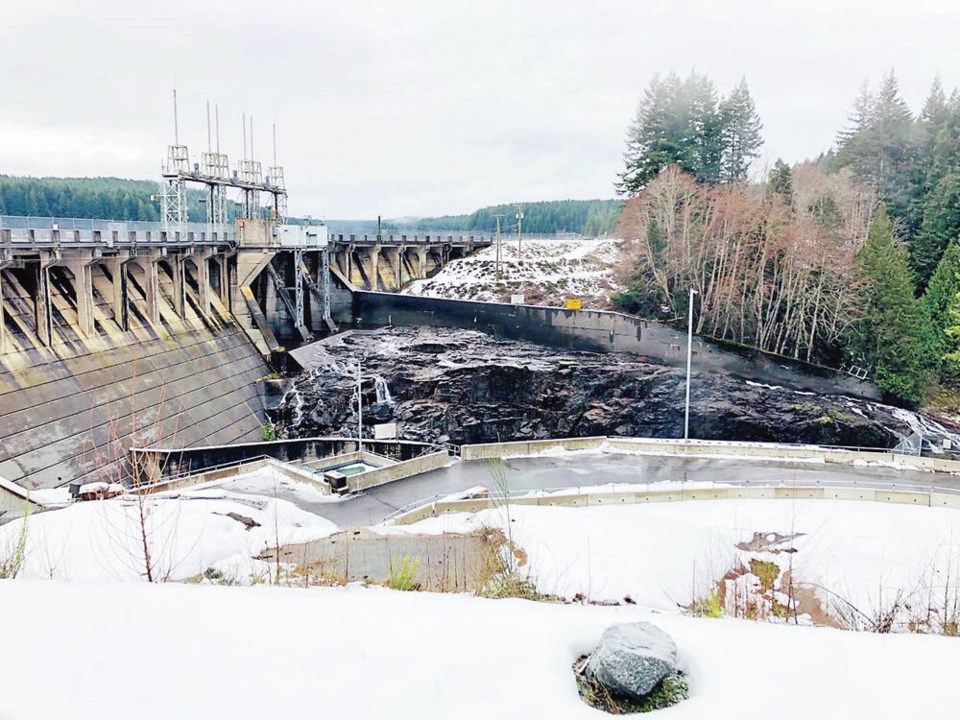B.C. Hydro is seeking bids for the seismic upgrade project at Campbell River’s John Hart Dam, which could cost up to $822 million.
“This is an important project for the Campbell River area,” Energy Minister Bruce Ralston said in a statement Friday. “It will provide benefits to the local economy, for public safety and for clean electricity generation.”
A preliminary estimate predicts that more than 600 person years of work, with about 100 people working at the site at any one time, is anticipated during the expected six-year build out, B.C. Hydro spokesman Stephen Watson said.
The project is aimed at updating the 2,624-foot-long dam, which was constructed in the 1940s, to meet modern seismic standards to ensure it could survive a major earthquake. B.C. Hydro is also planning seismic upgrades on its Ladore and Strathcona dams, also within the Campbell River system.
An application for seismic work on the John Hart facility will be submitted to the B.C. Utilities Commission next week.
The project’s cost is estimated at between $497 million and $822 million. The figures will be refined as the plan moves forward, the Crown corporation said.
B.C. Hydro is first seeking proposals for the civil work, which represents much of the in-ground work.
The related John Hart generating facility has already been upgraded to today’s seismic standards.
Another request for proposals for a spillway gate system is expected to be issued in 2025 or 2026. Spillways regulate the flow of extra water from a dam.
If all goes smoothly, B.C. Hydro would like to see the upgrade begin in 2023 and be completed by 2029.
Project plans call for new upstream and downstream berms, a spillway gate, a hoist replacement, a new overflow spillway, and an additional barrier to water seepage in an earth-filled dam. Spillways serve to regulate the flow of extra water from a dam.
Heavy machinery will be required. About 700,000 cubic metres of earth, enough to fill about 280 Olympic-sized swimming pools, will be removed or trucked in.
Loose organic material will be dredged from the bottom of the reservoir. After it is taken out, new gravel and rock will go in and be compacted, with riprap — angular stones used to reduce erosion — placed on the surface slope, said Stephen Watson, B.C. Hydro spokesman.
Still to be worked out is whether all the dredged material will leave the site or if some will remain in the penstock corridor that was excavated in the 1940s. A penstock is a pipe carrying water from a reservoir to a generating station. That decision will be made with the project contractor, Watson said.
If all the material is moved offsite, it would require about 36,800 tandem-truck trips, mainly on Highway 28. About a dozen trucks would be working at the same time, Watson said.
During the six years of construction, Brewster Lake Road, which runs across the dam, will be closed and a detour route used in its place.
Spill containment measures will be implemented. To keep reservoir water clear, two silt curtains will be anchored to the bottom of the reservoir to contain turbid (cloudy) water where work is underway.
Rory Kumala, Vancouver Island Construction Association president, welcomed the project but took note of the current skilled trades labour shortage.
“It’s going to require a lot of machinery and that’s available. It’ll be good. We have ample capability to do the work,” he said.
“It’s just — can we find the find the people? And that’s the crystal ball that I can’t see quite through.”



